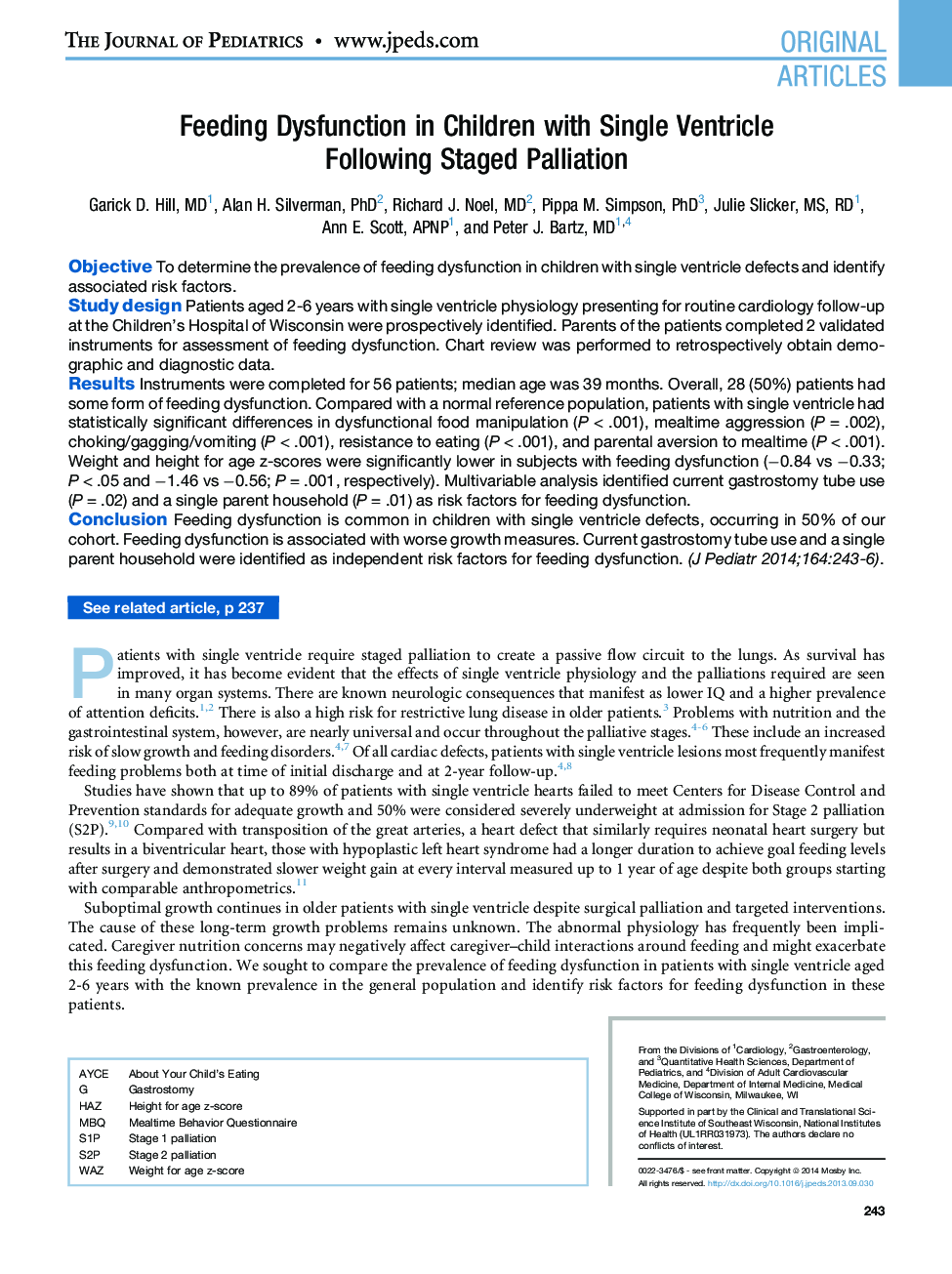| Article ID | Journal | Published Year | Pages | File Type |
|---|---|---|---|---|
| 6221864 | The Journal of Pediatrics | 2014 | 5 Pages |
ObjectiveTo determine the prevalence of feeding dysfunction in children with single ventricle defects and identify associated risk factors.Study designPatients aged 2-6 years with single ventricle physiology presenting for routine cardiology follow-up at the Children's Hospital of Wisconsin were prospectively identified. Parents of the patients completed 2 validated instruments for assessment of feeding dysfunction. Chart review was performed to retrospectively obtain demographic and diagnostic data.ResultsInstruments were completed for 56 patients; median age was 39 months. Overall, 28 (50%) patients had some form of feeding dysfunction. Compared with a normal reference population, patients with single ventricle had statistically significant differences in dysfunctional food manipulation (P < .001), mealtime aggression (P = .002), choking/gagging/vomiting (P < .001), resistance to eating (P < .001), and parental aversion to mealtime (P < .001). Weight and height for age z-scores were significantly lower in subjects with feeding dysfunction (â0.84 vs â0.33; P < .05 and â1.46 vs â0.56; P = .001, respectively). Multivariable analysis identified current gastrostomy tube use (P = .02) and a single parent household (P = .01) as risk factors for feeding dysfunction.ConclusionFeeding dysfunction is common in children with single ventricle defects, occurring in 50% of our cohort. Feeding dysfunction is associated with worse growth measures. Current gastrostomy tube use and a single parent household were identified as independent risk factors for feeding dysfunction.
